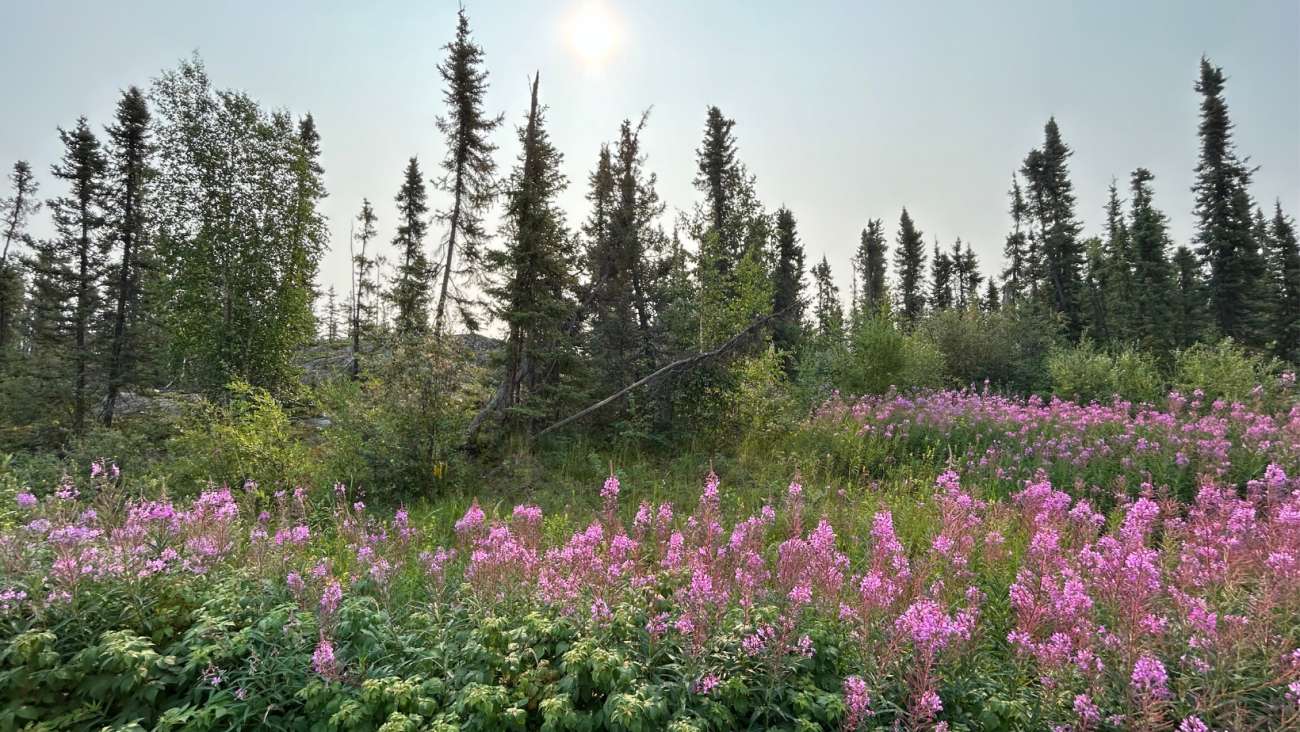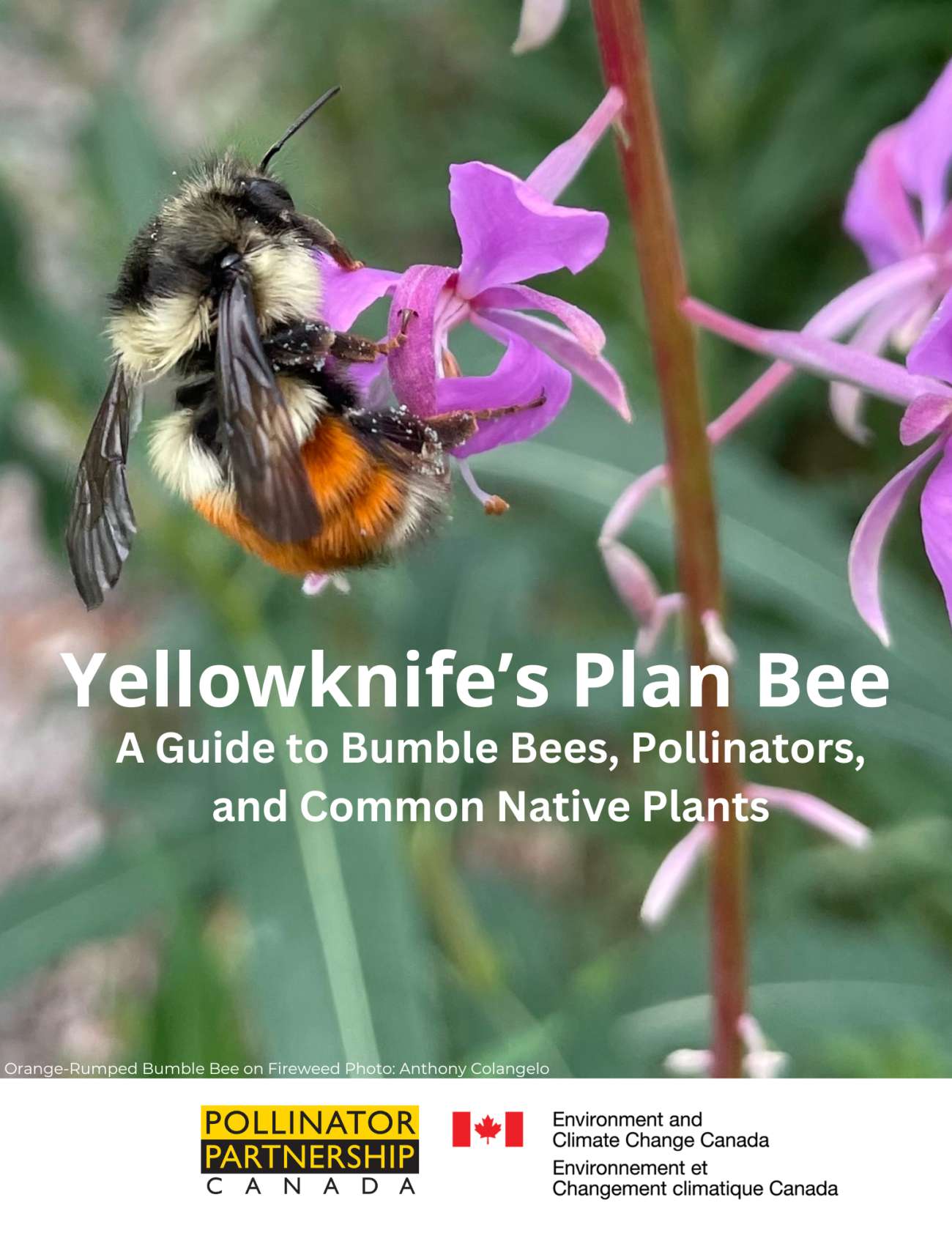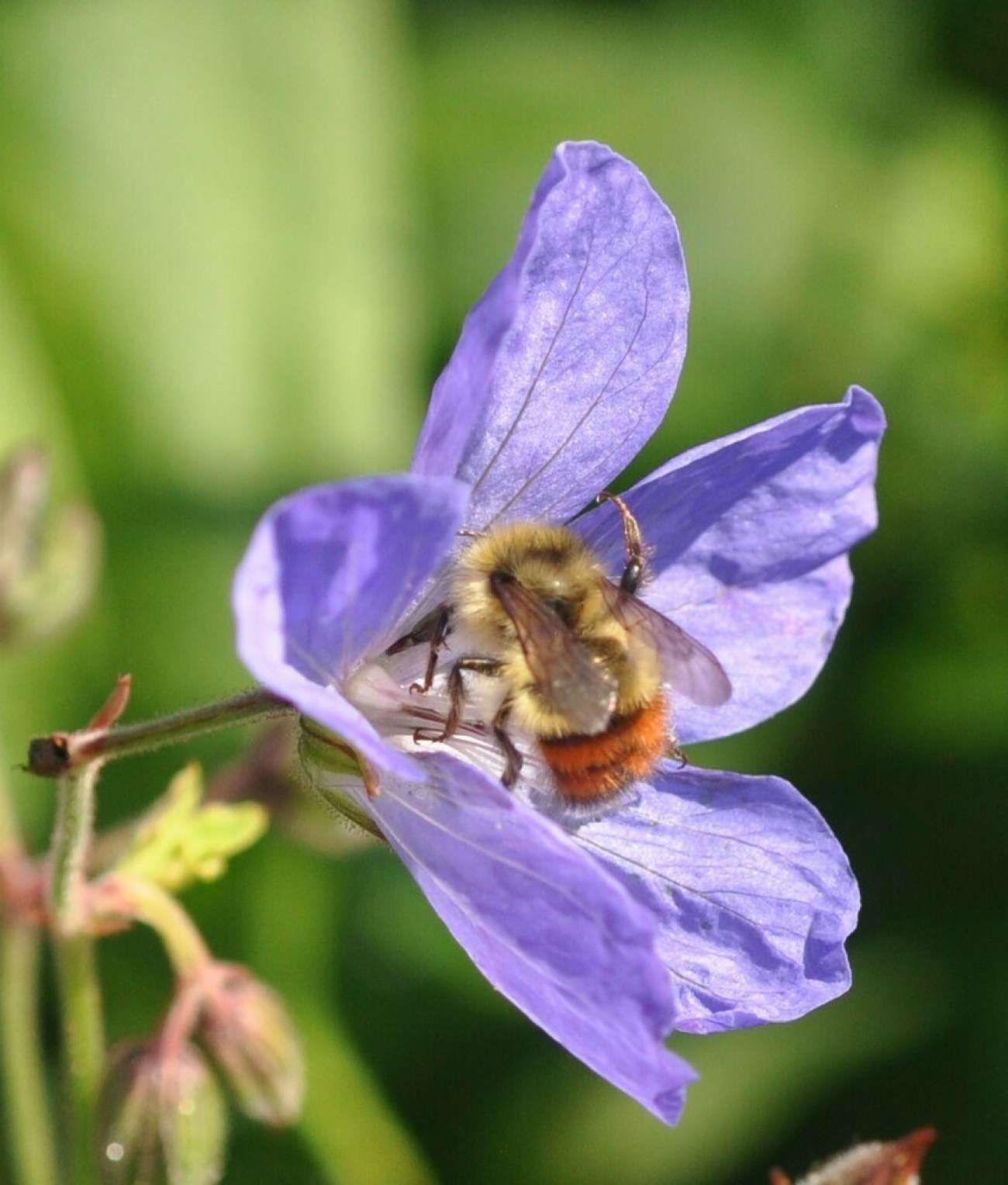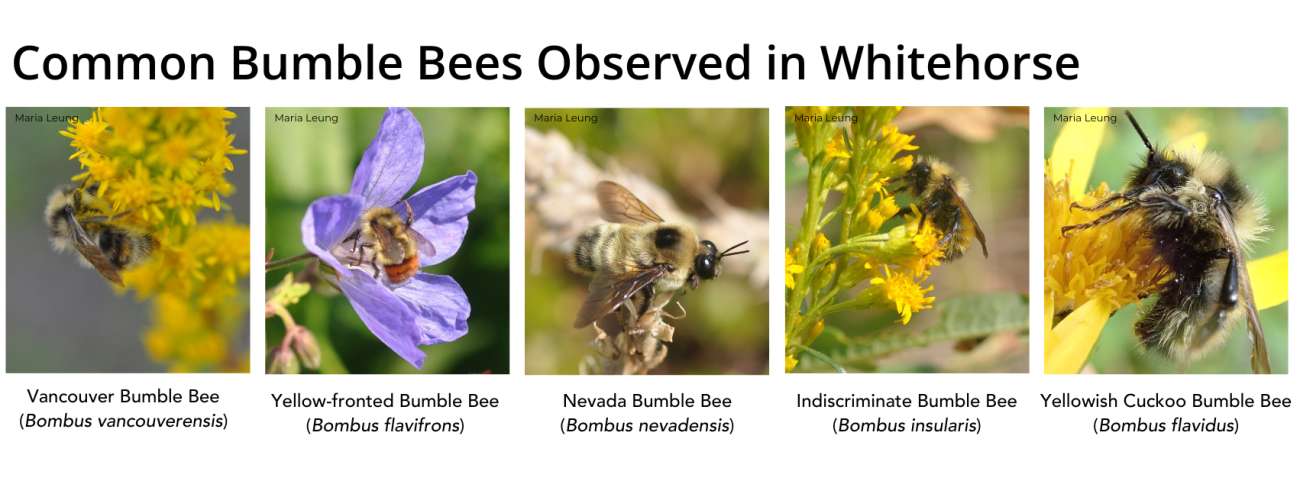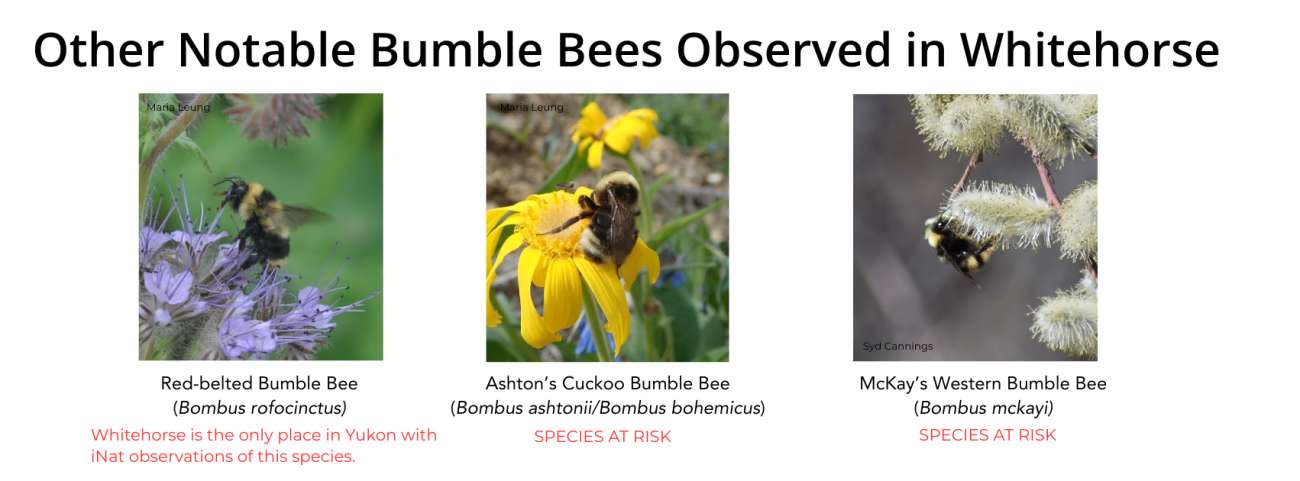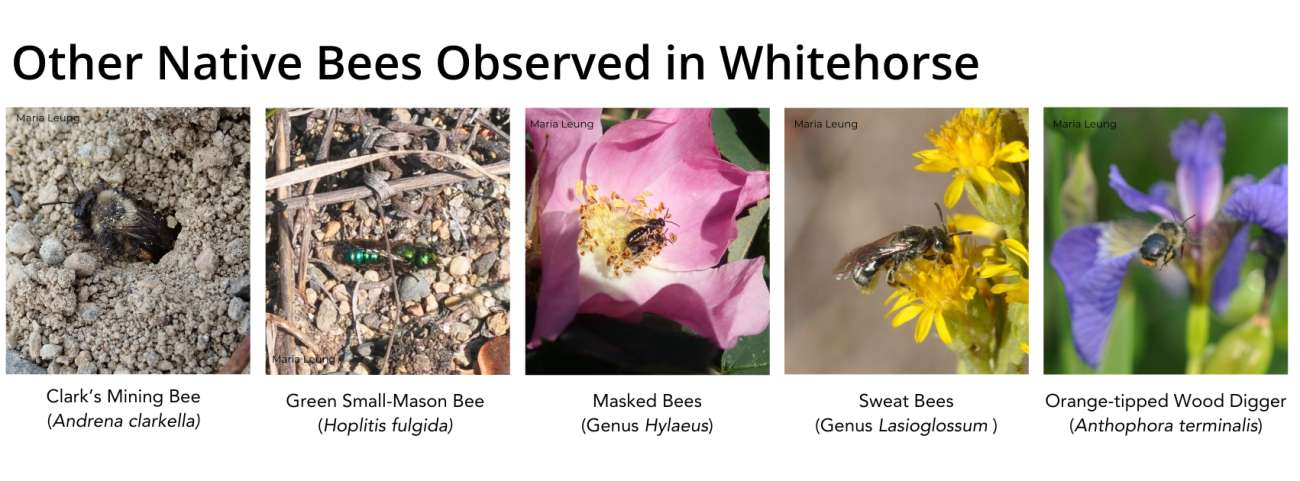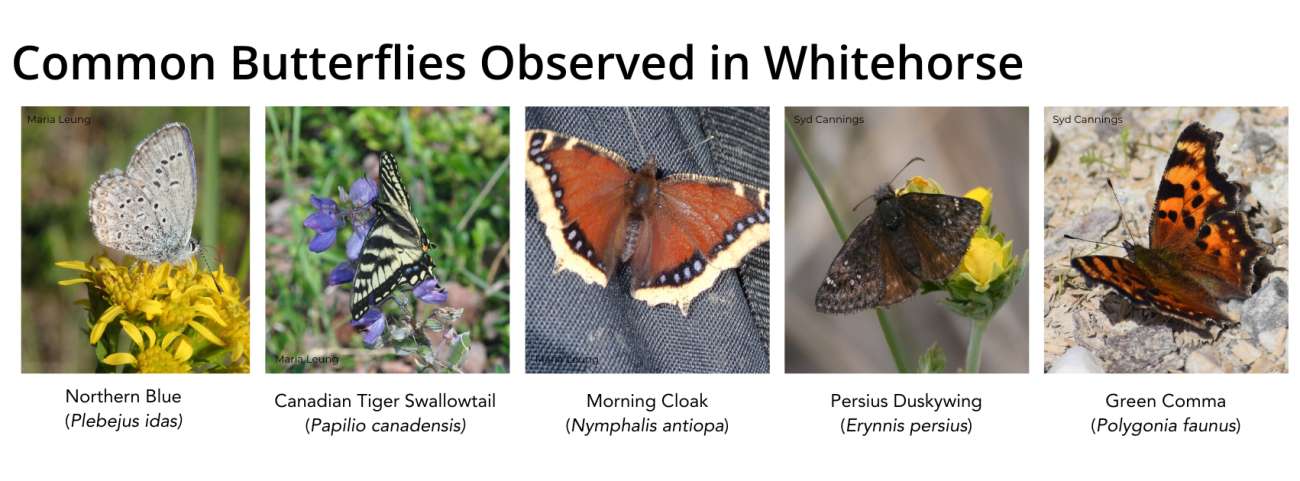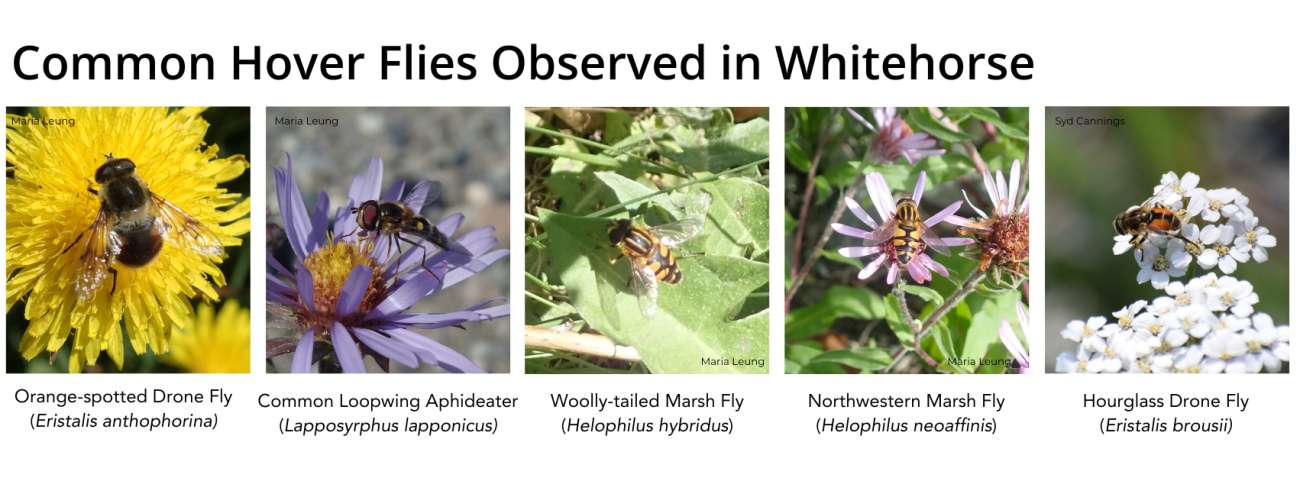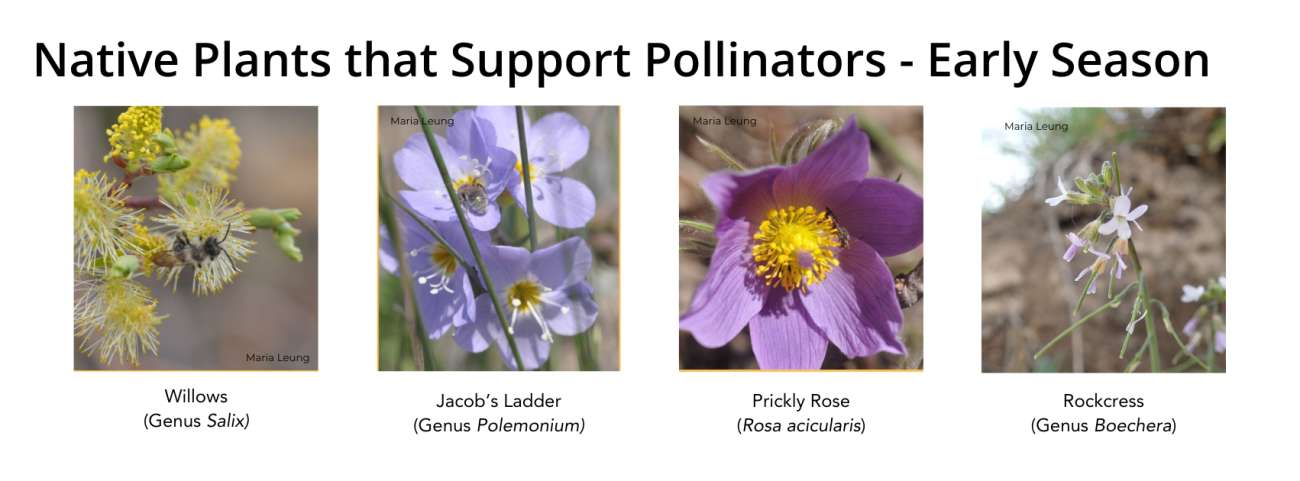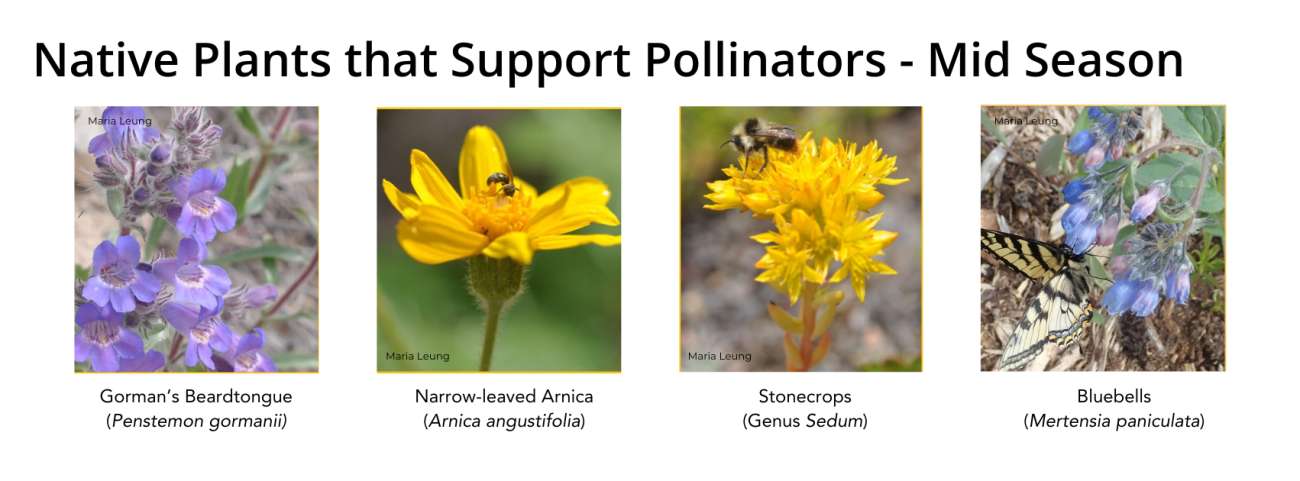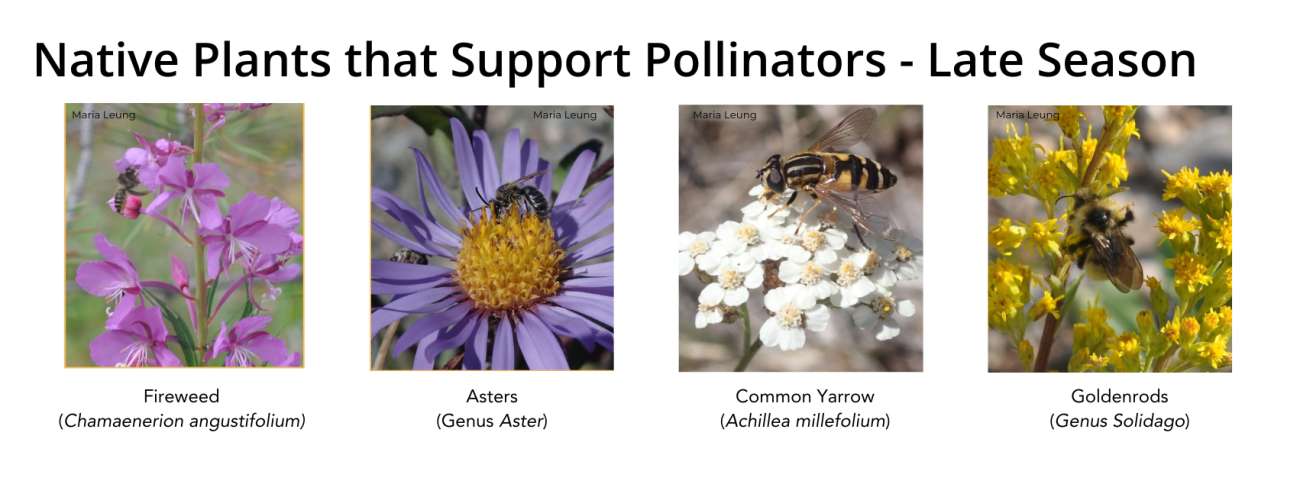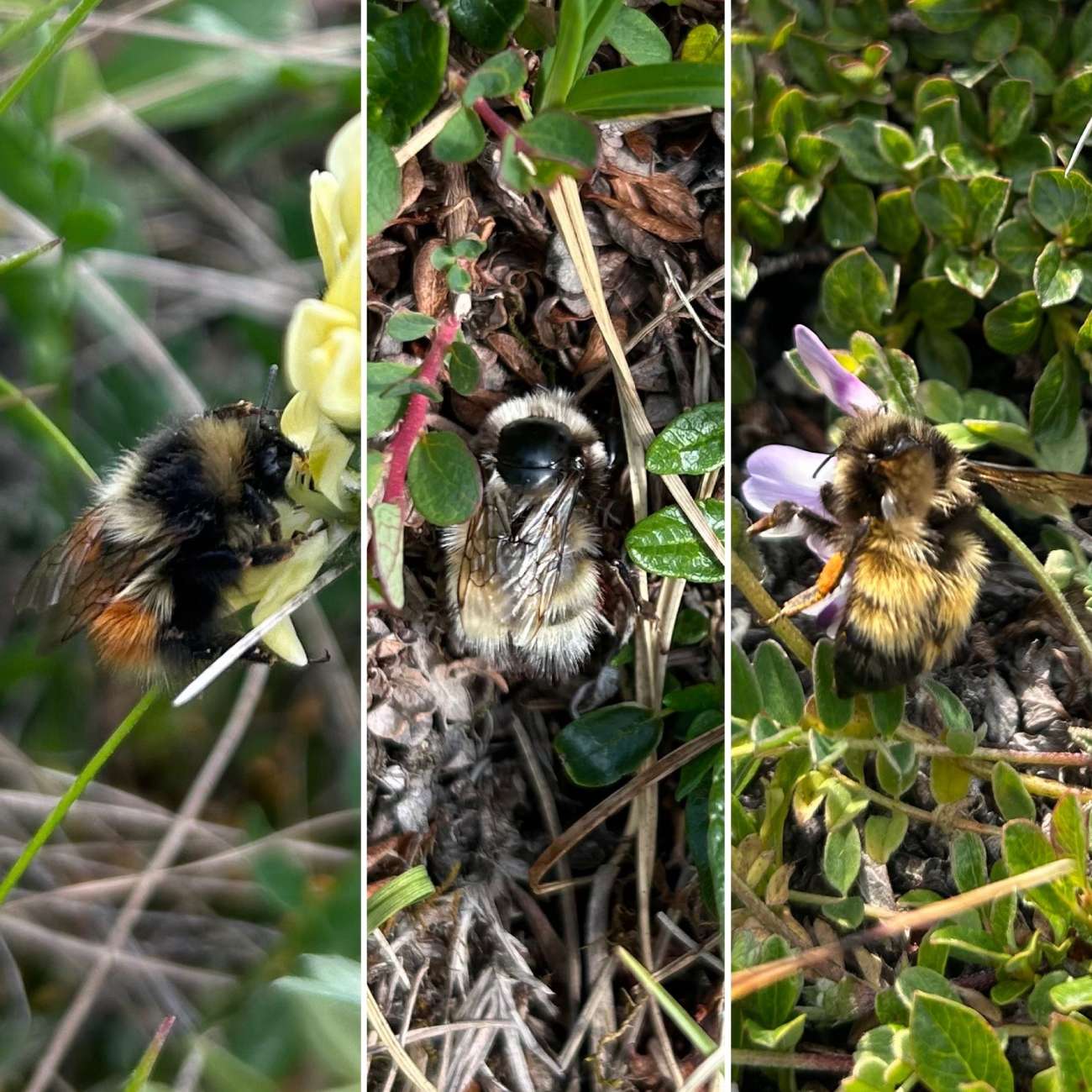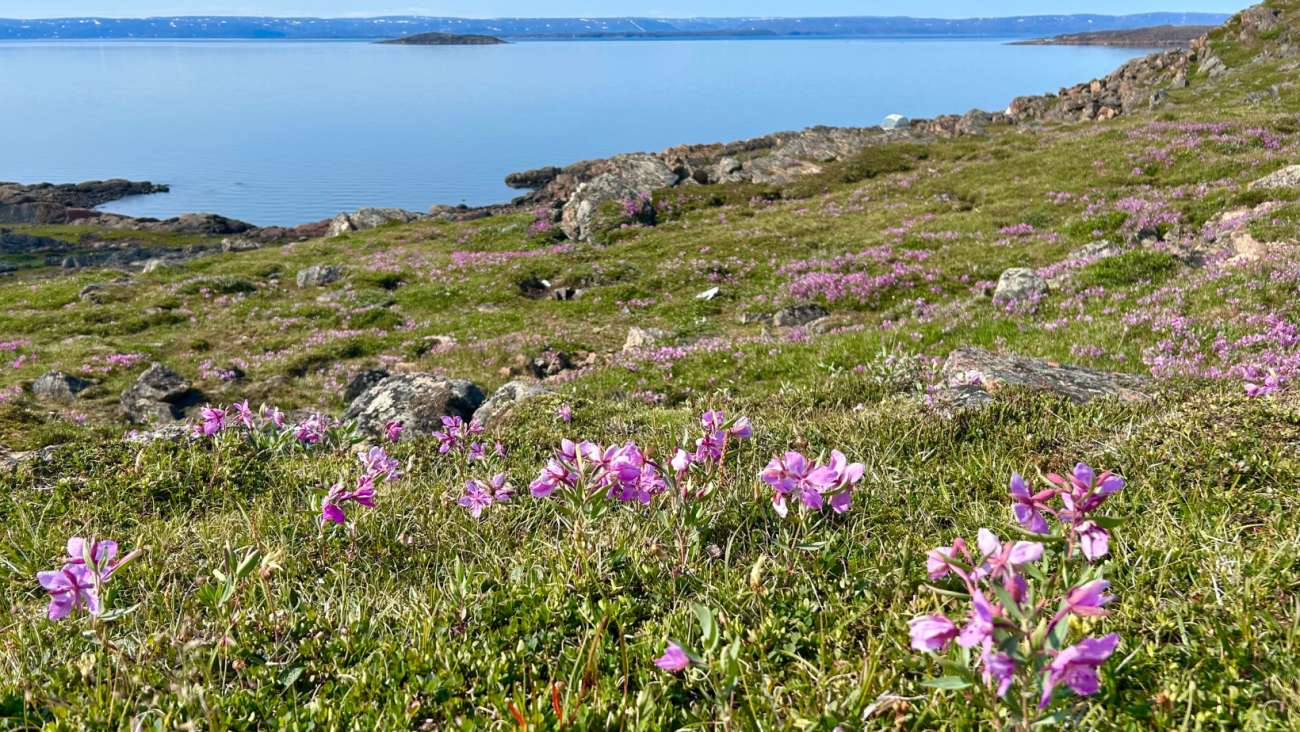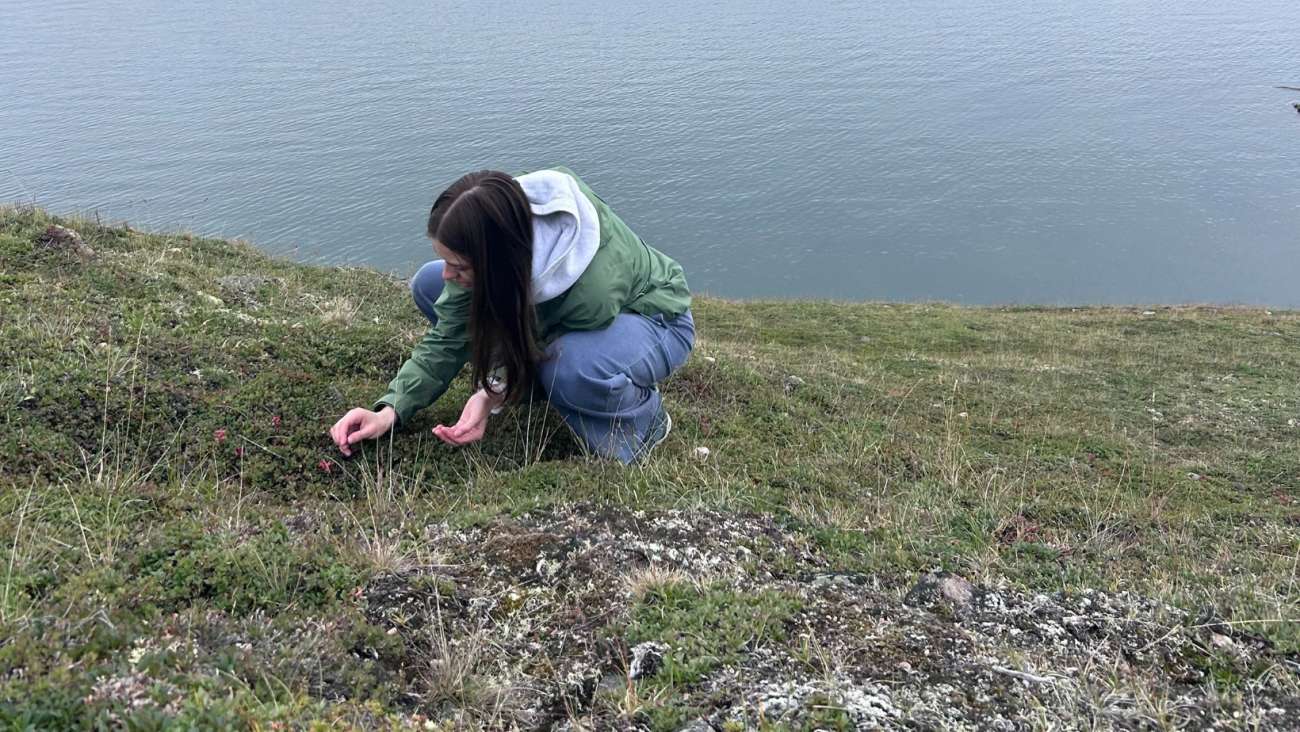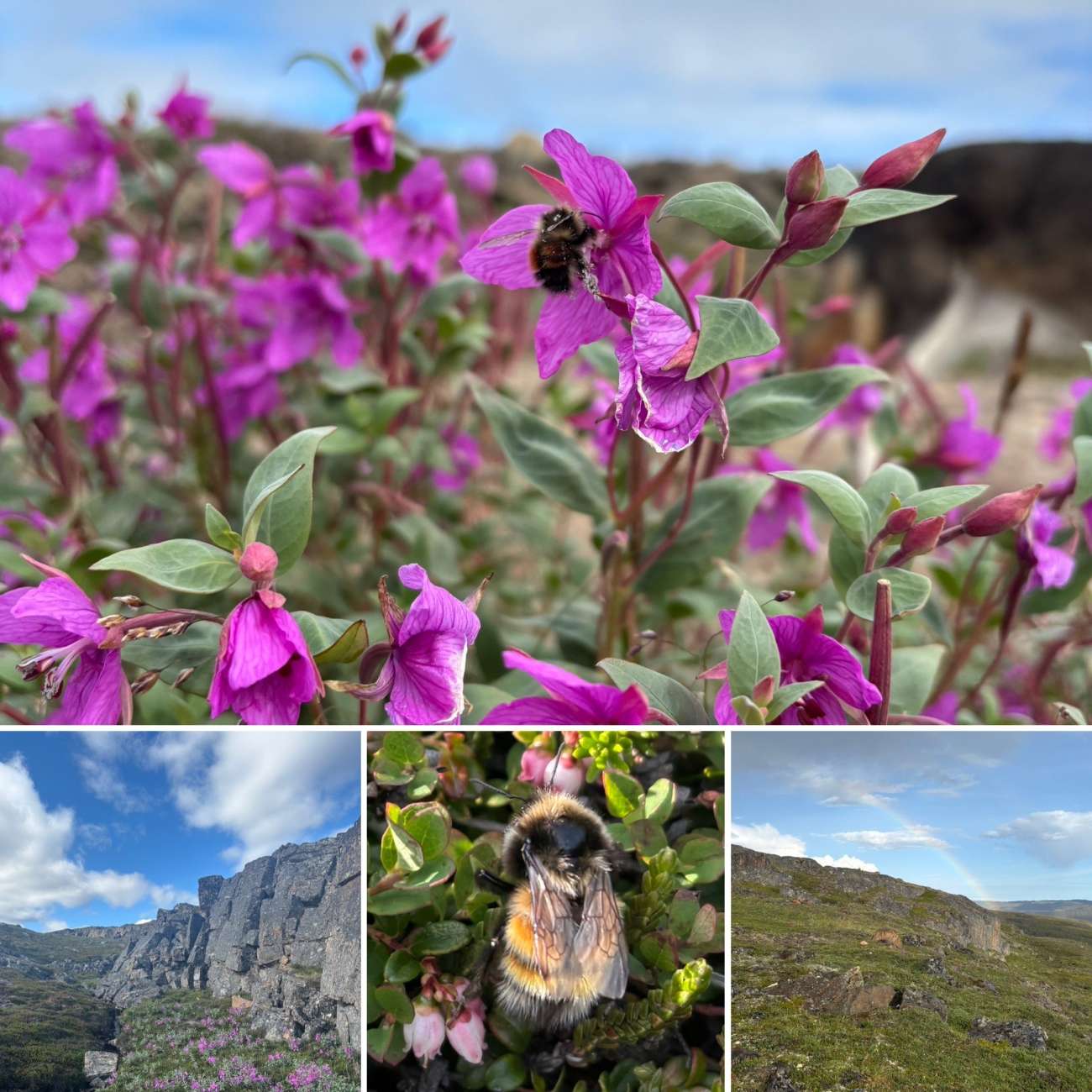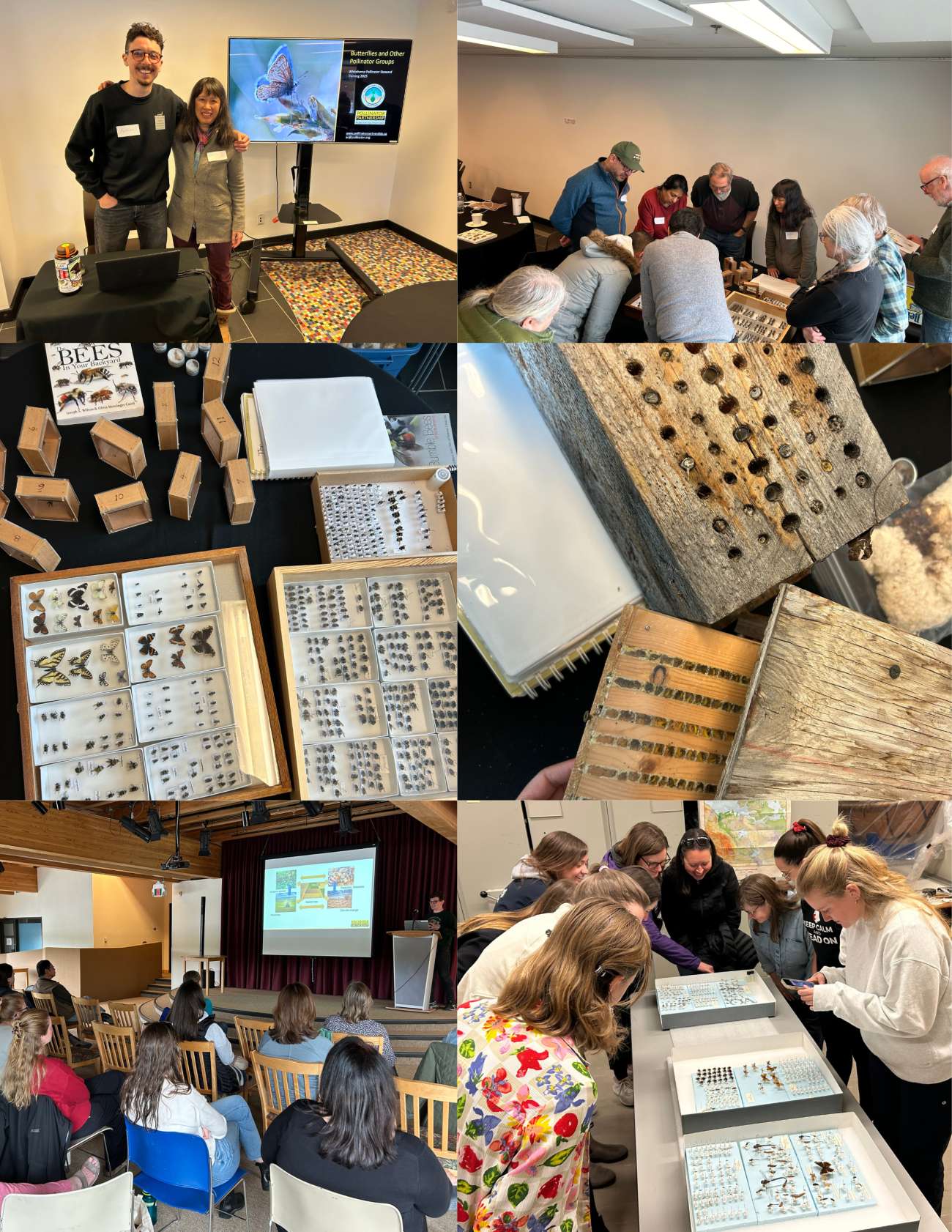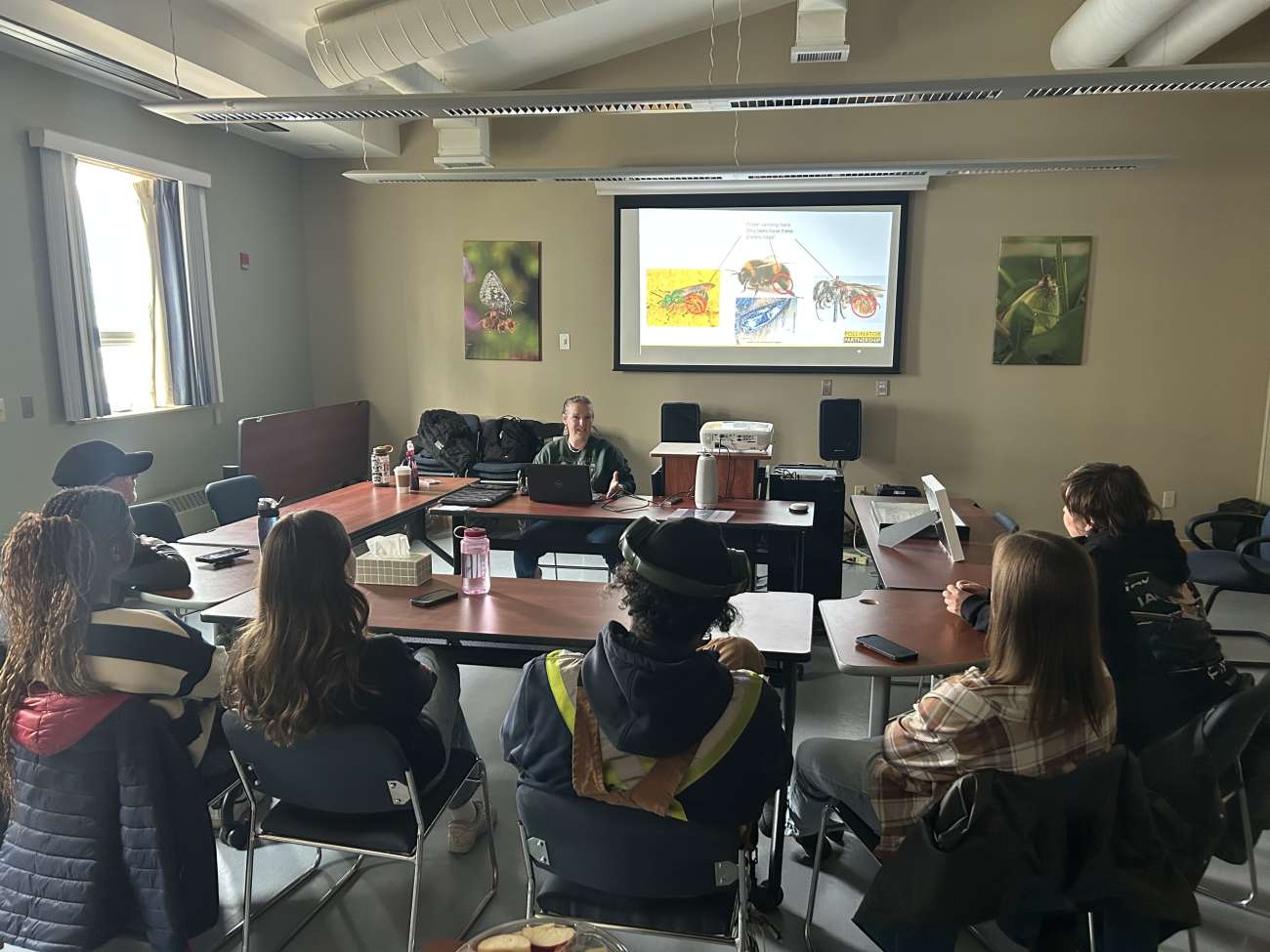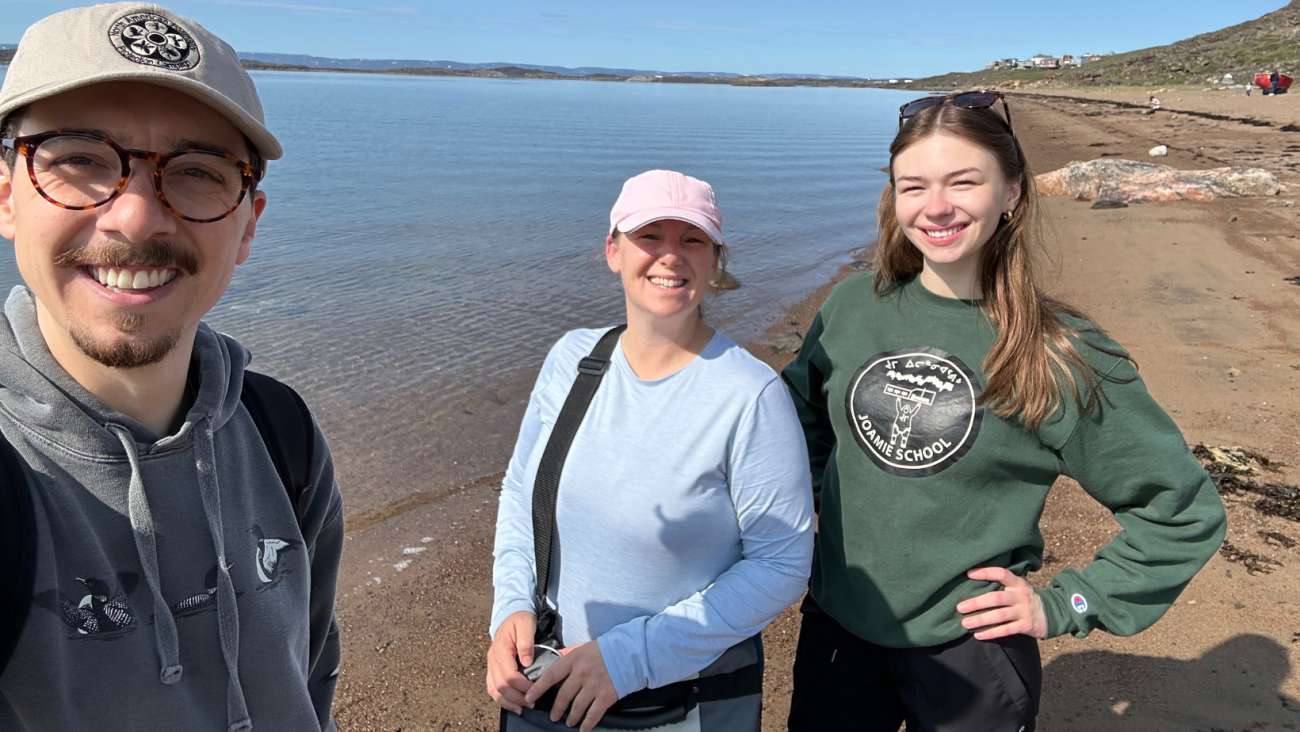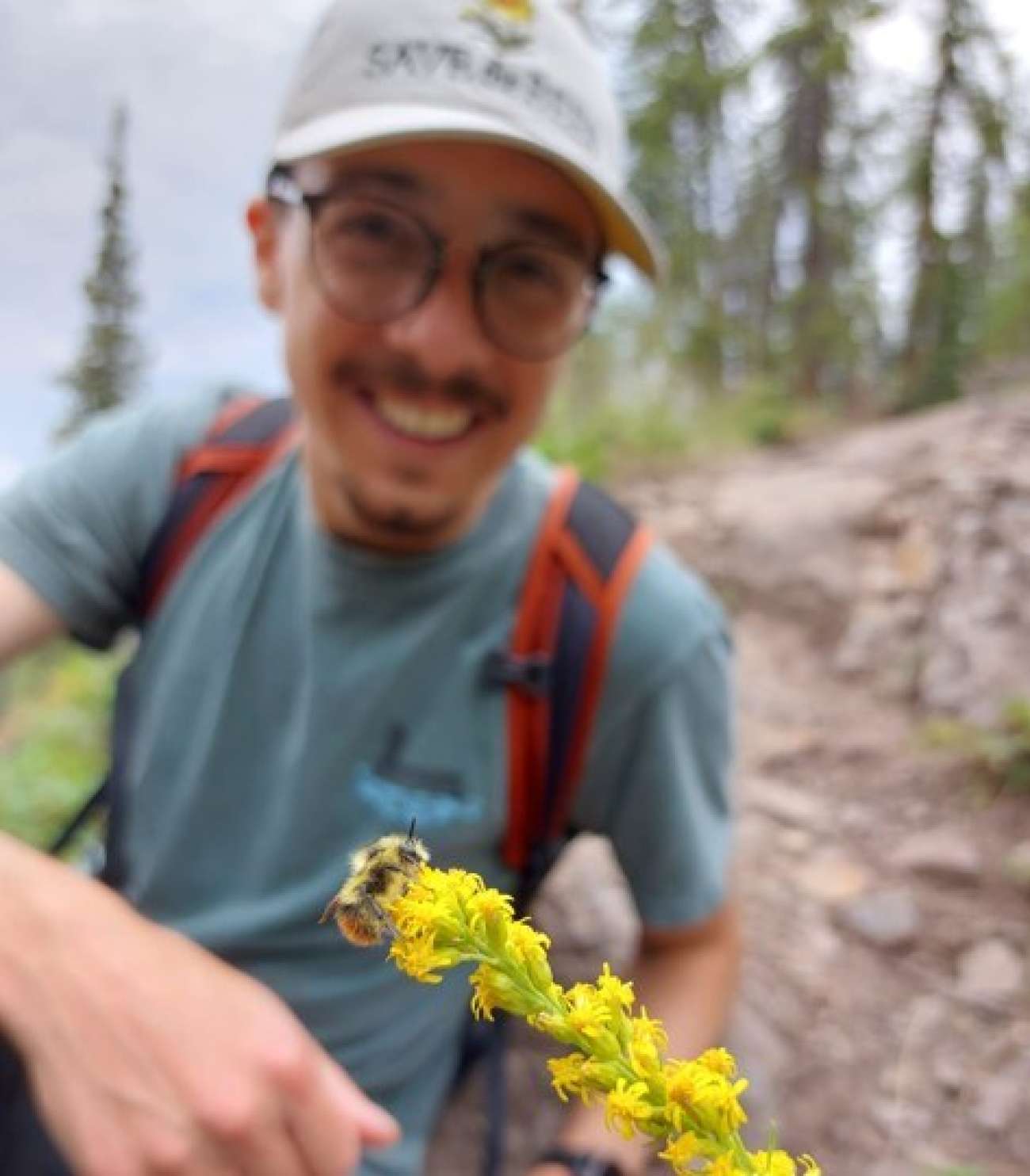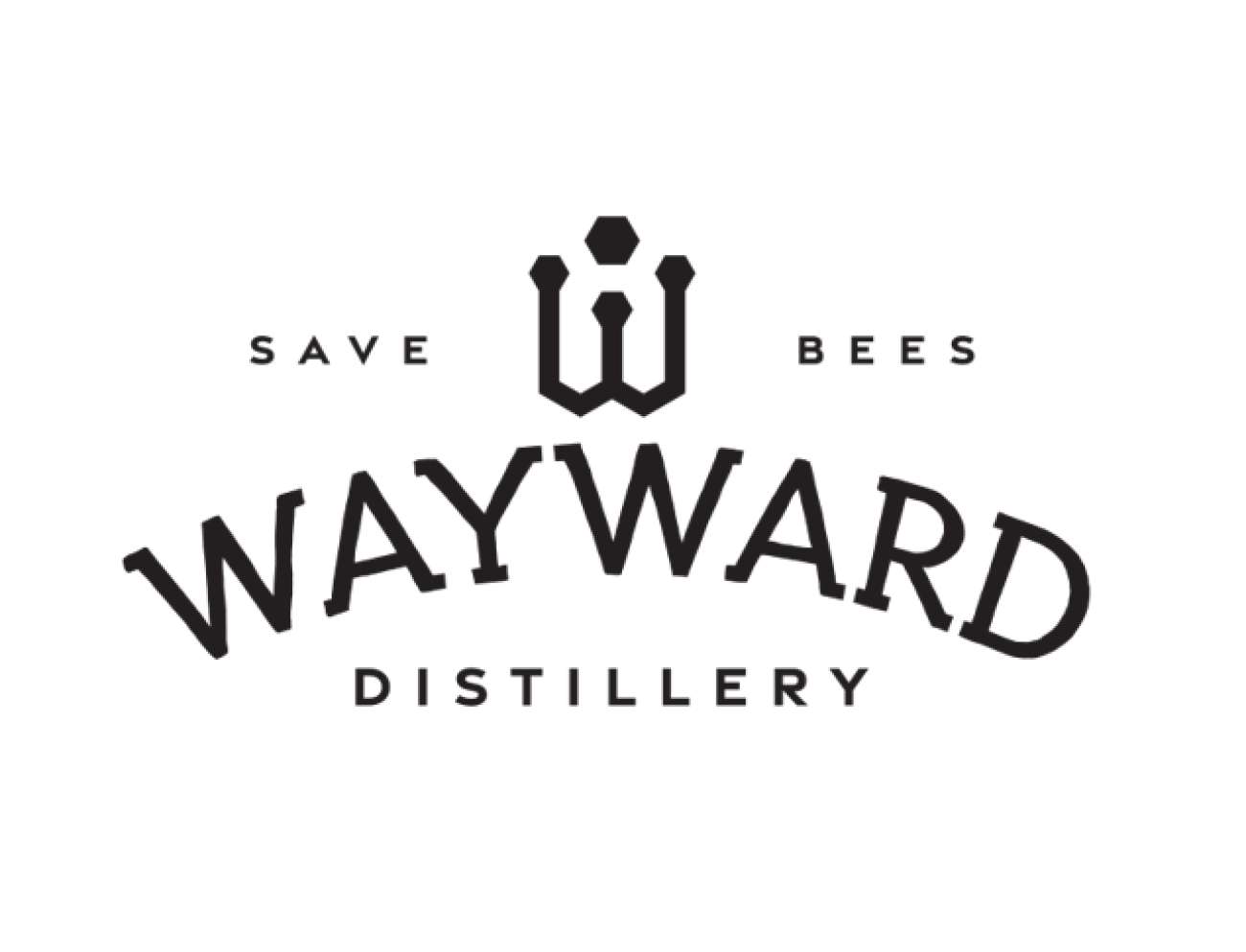Observing Bees in Canada’s Northern Territories
Welcome to our Plan Bee Community Science page! Keep scrolling to learn more about the work we are doing in all three Canadian Territories to protect and promote our northern bees and pollinators. Thank you to Environment and Climate Change Canada’s Habitat Stewardship Program for funding and supporting this project. Thank you to all the community scientists around Yellowknife, Whitehorse, and Iqaluit who contributed observations to our iNaturalist pages. And thank you to the ID experts on iNaturalist for your help identifying the observations we uploaded.
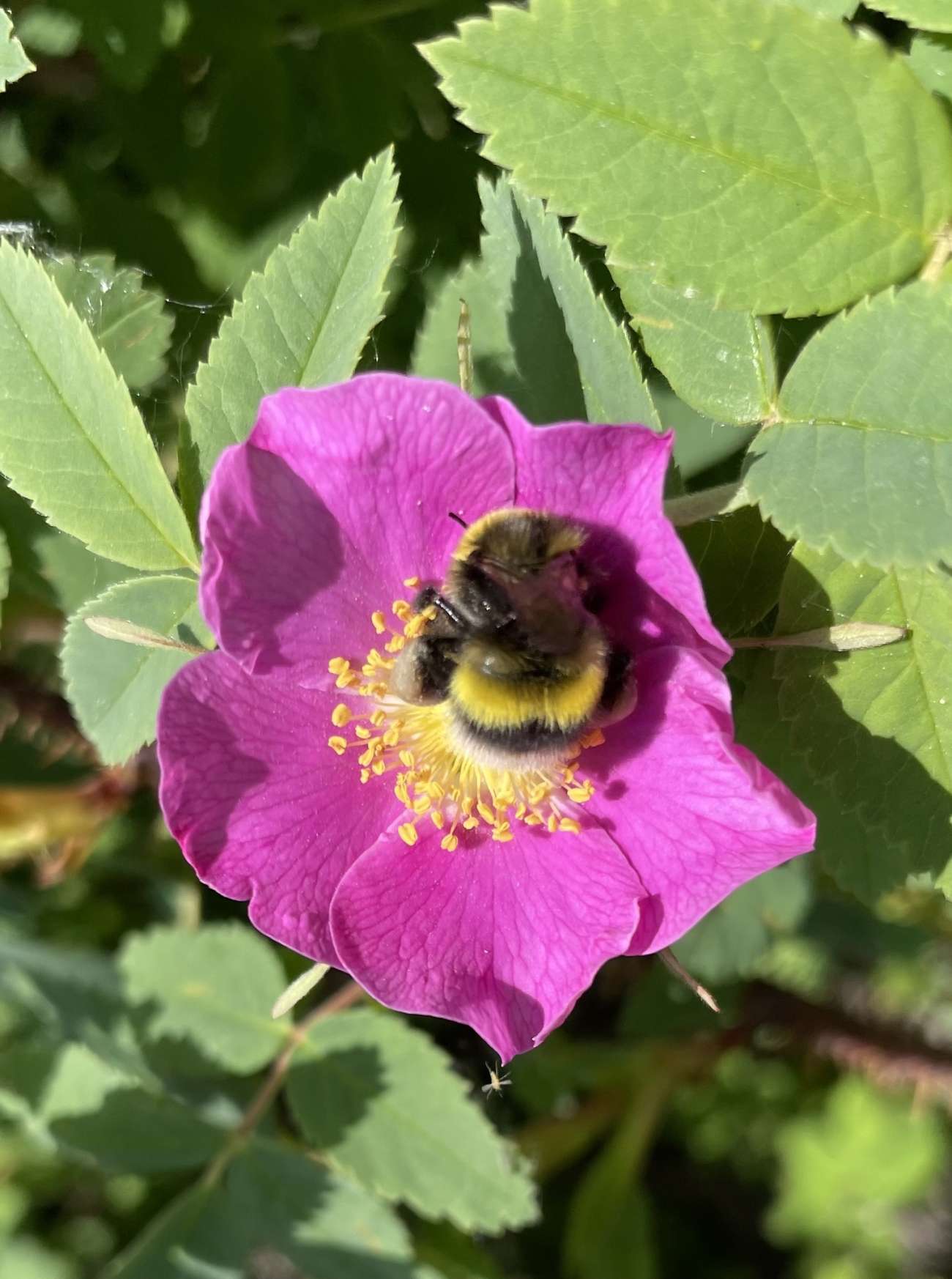
Plan Bee Yellowknife, NWT
Yellowknife is located in Canada’s beautiful Northwest Territories, known for incredible views of the Aurora borealis, rugged boreal landscape, and extremely cold winter temperatures. But what a lot of folks might not realize travelling so far north is how amazing the bee world is up here. There are approximately 110 bee species native to the territory. Various species of bumble bees are a common sight, as they are particularly good at surviving cooler temperatures and demonstrate their incredible resilience by hibernating for over 9 months of the year when temperatures dip down to -50 degrees Celsius.
However, there are currently three bumble bee species at risk in the Northwest Territories including the western bumble bee (Bombus occidentalis), the yellow-banded bumble bee (Bombus terricola), and the gypsy cuckoo bumble bee (Bombus bohemicus). There is also a general need for more research on northern bees and pollinators. This is where Yellowknife’s Plan Bee comes into play. At Pollinator Partnership Canada, our ongoing work in Yellowknife started in 2021 with federal grant funding from Environment and Climate Change Canada’s Habitat Stewardship Program.
The goal of our project is to learn more about the native flowers bumble bees, specifically at-risk species, and other native pollinators are using around Yellowknife through community science. Our main objectives are to gain an understanding of 1) the critical food resources needed for survival by at-risk bumble bees, 2) the current local occurrences of these bee species, 3) the stewardship capacity to protect these listed species and their ecosystem services, and 4) to increase community engagement and knowledge about bees and pollinators.
One of the special aspects of this project is being able to conduct summer field work in Yellowknife. With almost 24 hours of sunlight in the summer months and the welcoming sight of the midnight sun, bees and flowers take over the landscape, maximizing their time in the warmth and abundance of light.
Field work involves observing patches of wildflowers around town, recording all bee and pollinator occurrences on those patches of flowers, and then uploading each observation to iNaturalist for species identification and location data. The great thing about our community science approach to field work is that it makes it easy for anyone to participate. Every picture uploaded to our iNaturalist page helps improve our data all while helping us better understand specific plant-pollinator interactions and the diversity of bee species each type of native flower attracts.
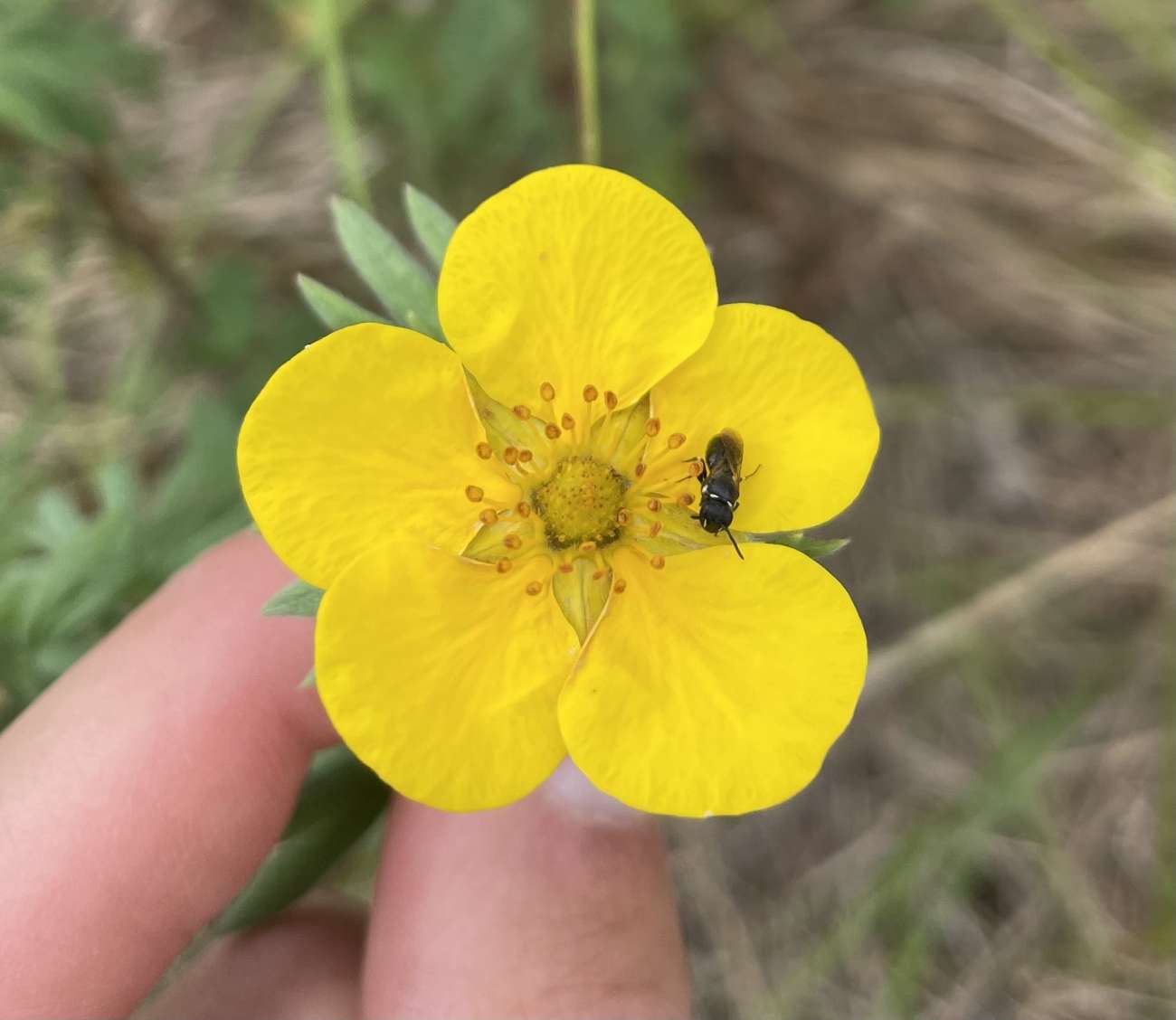
After three summer field seasons, we are currently up to over 1,000 documented bee and pollinator observations with 73 different species identified. Seen in the picture above is one of the incredible bumble bee species recorded in our project so far. Other pollinators were also observed including many species of native solitary bees as seen in the picture to the right, butterflies such as the striking Canadian tiger swallowtail butterfly, energetic hummingbird moths, and flower flies that act as excellent bee mimics.
Popular native flowers that attracted the most bee diversity included fireweed, prickly wild rose, shrubby cinquefoil, and common yarrow. The great thing about Yellowknife is that the city keeps large patches of wildflowers blooming around town along roads and sidewalks all summer long, and therefore almost everyone intentionally, or unintentionally, has patches of flowers on their property that provide essential resources to the local pollinator populations. Going forward, Pollinator Partnership Canada will continue with our community science work to increase the number of pollinator observations in Canada’s north, as well as increasing awareness for these vital creatures and their ecosystem services.
A Guide to Bumble Bees, Pollinators, and Common Native Plants in Yellowknife
This guide is perfect for anyone wanting to learn more about the bumble bee and pollinator species found around Yellowknife and the common native plants they visit for pollen and nectar. Inside this guide you will find pictures of bumble bees, other native bees, and other pollinators observed during our summer field seasons. You will also find a list of native plants and all the bees and pollinators that were observed visiting them. This guide can help with future conservation efforts in Yellowknife by providing information on plant and pollinator interactions, showing which native plant species attract the most pollinator diversity. Especially for at-risk bumble bee species in the NWT. Data was collected and compiled through observations posted to iNaturalist. If you would like to contribute valuable pollinator data to our project, click here!
Plan Bee Whitehorse, Yukon
In 2024 we expanded our project to include Whitehorse, Yukon. The goal of our project is to learn more about the native flowers bumble bees and other native pollinators are using around Whitehorse through community science to better understand how we can protect them. Field work involves observing patches of wildflowers around town, recording all bee and pollinator occurrences on those patches of flowers, and then uploading each observation to iNaturalist for species identification and location data. Every picture uploaded to our iNaturalist page helps improve our data all while helping us better understand specific plant-pollinator interactions and the diversity of bee species each type of native flower attracts.
We currently have more than 5,000 pollinator observations included in the project with 221 species identified.
Check out some of the notable observations that our Plan Bee community scientists in Whitehorse have made so far!
Plan Bee Iqaluit, Nunavut
In 2025 we expanded our project to include Iqaluit, Nunavut. The goal of our project is to learn more about the native flowers bumble bees and other native pollinators are using around Iqaluit through community science to better understand how we can protect them. Field work involves observing patches of wildflowers around town, recording all bee and pollinator occurrences on those patches of flowers, and then uploading each observation to iNaturalist for species identification and location data. Every picture uploaded to our iNaturalist page helps improve our data all while helping us better understand specific plant-pollinator interactions and the diversity of bee species each type of native flower attracts.
Plan Bee Iqaluit Project Spotlight
Hi there! My name is Kaia Paterson, and I live in a small city called Iqaluit, located in the Qikiqtani region of Nunavut. I worked alongside P2C this summer as the Field and Outreach Assistant for the Plan Bee Community Science Project. I am currently pursuing a degree in Biology, which has allowed me to gain access to such important opportunities like Plan Bee. I have learned so much about the local pollinators of Iqaluit, as well as the different plant species that rely on them. I loved observing the variety of bee species during my field work, specifically the Forest Bumble Bee, which I have noticed to be fairly large in size. During my field season, I also learned how quickly environments can change as the weather gets colder. One of the many highlights of this project was taking some of my colleagues at P2C out to my favourite field sites around Iqaluit! I intend to complete my undergraduate degree in Biology and continue my studies within the field. Plan Bee has reinforced so much of my learning, and being a part of the P2C team has been so rewarding. I will continue to be an advocate for community science education, especially in remote locations like Iqaluit.
Plan Bee Workshop Photos
Questions?
If you have any questions about pollinators or about how to get involved in the project, feel free to email Anthony Colangelo, the Plan Bee project lead, at ac@pollinator.org.
